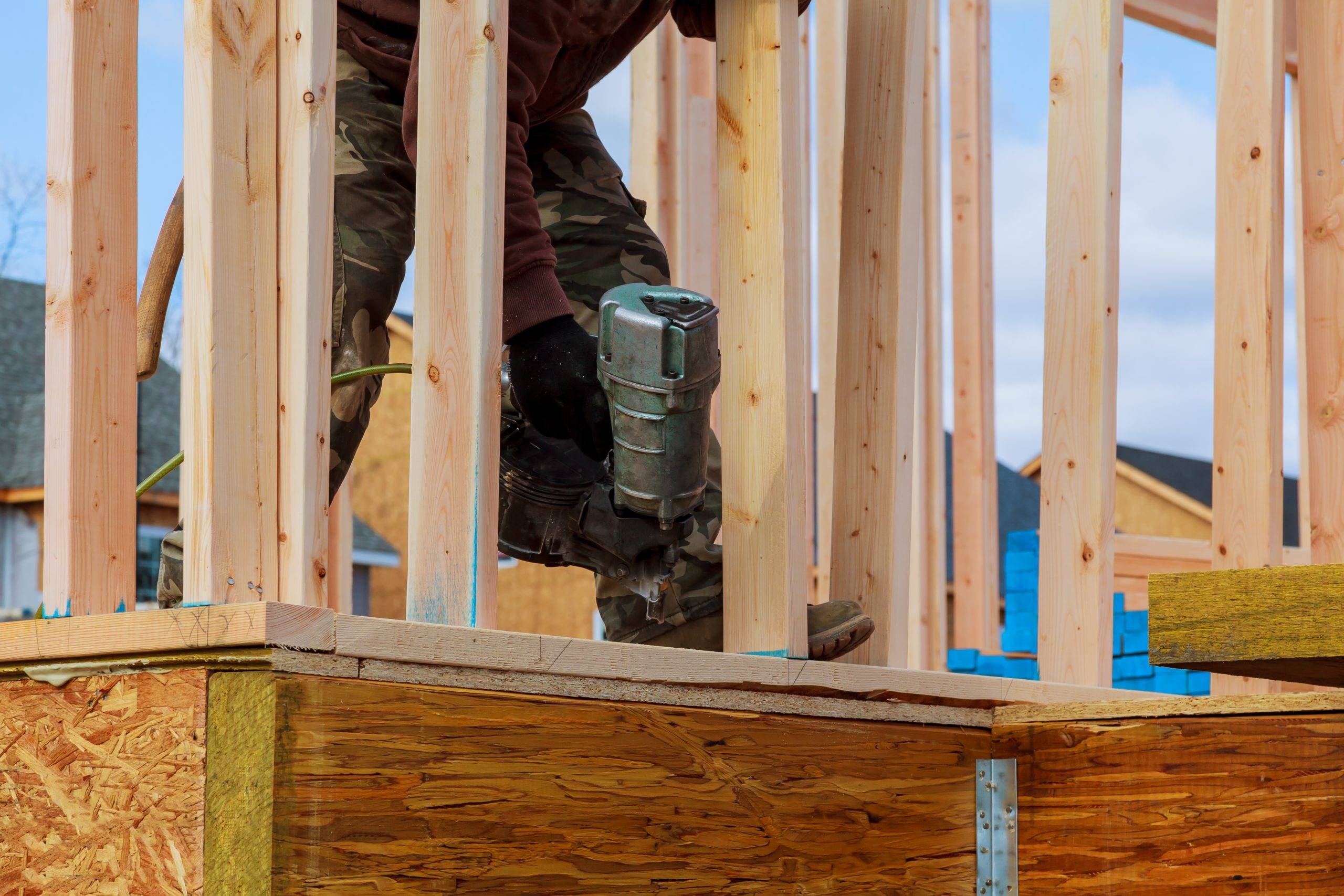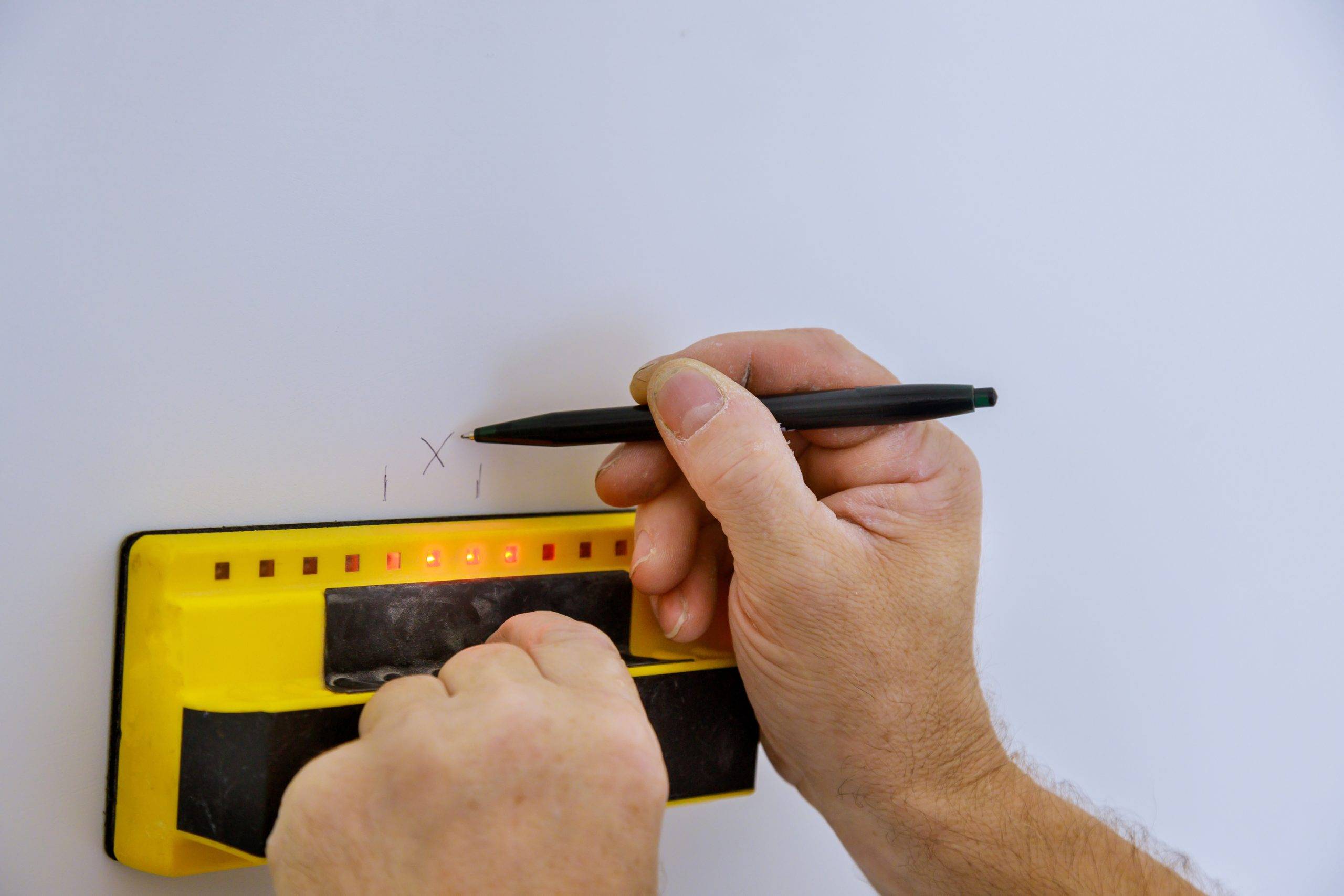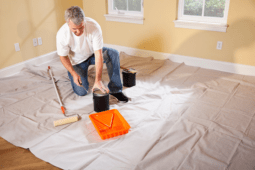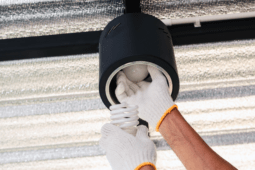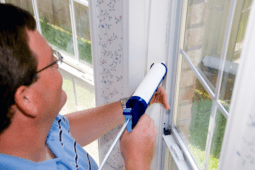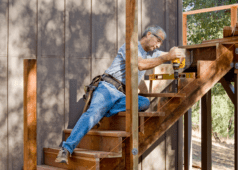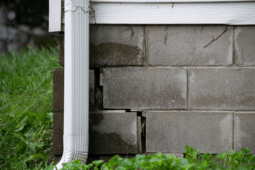10 Ways to Find a Stud in the Wall
Hanging pictures or decor on the wall is done in almost every home. It’s extremely rare to enter a house and not see anything on the walls, so of course, we want to hang up items in our own homes, but before you go slugging away a hammer at a nail, it’s important to consider what you’re hanging and if you will need to anchor into a stud.
Sure, you can often get away with light pictures with just a hammer and nail, but if you want to securely hang anything heavy such as heavy mirrors, large art, wall-mounted shelves, or television — you’ll most definitely want to locate a wall stud. A wall stud is a vertical piece of framing within your walls, and by anchoring your nail or screw into this stud, you will provide a sturdy piece for your item to latch onto. Without anchoring your nail or screw into a stud, you set yourself up for accidents that could potentially cause damage to your wall.
1. Use a Light Switch or Power Outlet
The most reliable method, second to a stud finder, is to find a light switch or a power outlet. Electrical boxes are generally affixed to studs. Locate the one nearest to the area where you want to hang something. Once you have located your electrical box, measure 16 inches from there since wall studs are normally spaced 16 inches apart by code. As we mentioned above, in some homes, the studs are placed 24 inches apart, so you may have to measure twice.
2. Look for Dimples
All drywall is anchored to your wall studs with screws. The mudding process of drywall installation covers these holes up. After applying a coat of primer and paint, these holes are almost invisible. The secret to finding your drywall studs is looking for these holes with the help of a flashlight.
- Turn off the lights in the room.
- Aim your flashlight at a vertical angle against the wall, so the light beam extends across the wall.
- Look for little dimples in the wall, which indicates a drywall screw. Try looking from different angles if you’re having trouble finding them. The dimples go from the ceiling to the floor in one straight line.
- Use a pencil to mark a dimple. From this spot, you can measure 16 inches to the left or right of your mark, which should take you to the center of the next drywall stud. Notice if you can find a dimple there as well to confirm.
3. Use a Window
Windows typically have a stud on each side, but finding the edges can be tough. This method is far less reliable than the ones noted above. Still, if all else has failed, locating the edge of your window and measuring 16 inches from there can help provide some broad direction.
4. Tap the Wall
To confirm whether or not you’ve found a stud without doing any damage to your wall, knock or tap the area very gently with your hammer. If you hear a hollow sound, tap a little to the left or to the right. You’ll know you’ve hit a stud when the sound is muffled.
5. Drill a Hole
It doesn’t matter which method you use; no matter what, you should still confirm your findings before proceeding to hang your item. To do so, drill a hole in the wall. If you feel resistance, you’ll know you’ve hit wood — the stud.
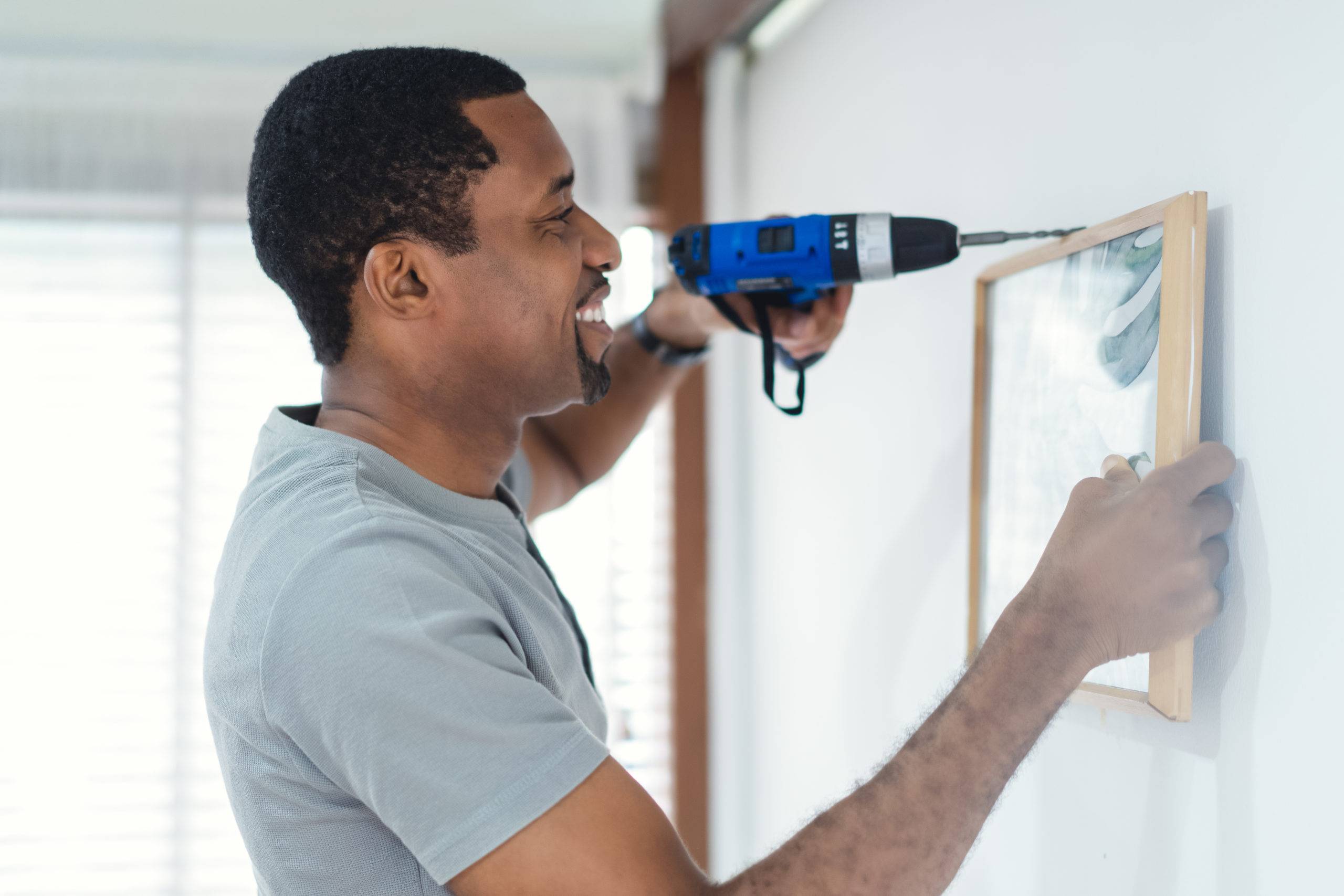
6. Use a Stud Finder App
Thank goodness for smartphones! If you have one, you will probably be able to find an app right in your phone that can be used to find studs. Most stud finder apps are magnetic and rely on your smartphone’s built-in magnetometer to pinpoint metal objects inside the wall. Be careful, though — While this can help you find a wall stud, it can also turn up a false positive since the app may detect things other than studs, like nails or electrical wires.

7. Use a Strong Magnet
You can use a strong magnet as a way to find a stud without a stud finder. A lot of levels come with a strong magnet on them, so see if your level has one. If not, you may have another strong magnet around the house. To use the magnet to find the stud, simply run the magnet along the wall until you feel it stick to one of the steel fasteners that’s holding the drywall on.
You can then mark above or below your magnet, and you have found your stud.
8. Use the Nails in the Baseboards
This is easier in an unfinished house, but most carpenters will secure the baseboard with nails along the stud. Look along the baseboards for the nails.
If the nail holes have been filled with putty and painted over, you can still usually see a slight depression if you look close enough.
9. Measure from the Corner
Since studs are typically 16″ on center, you can do calculations by measuring a corner of the room. Keep in mind that all rooms aren’t built in numbers divisible by 16″, so there is a great chance you’ll find a stud that is less than 16″ from one corner. You can attempt the “knock test” near the corner to see if you can determine where the shorter stud spacing might have been added.
This is most useful if you’re measuring a corner of the exterior of the house, which is why it is the least helpful way to find a stud without a stud finder.
What To Do if You Miss the Stud
Sometimes, after all this, you can still miss the stud, and now you’re left with a hole in the wall. Don’t get upset or flustered if your screw or nail misses the mark. In most cases, the item you’re hanging may be large enough to cover the extra hole. If you need to repair the hole, simply extract the screw or nail, fill the hole with spackle and touch it up with paint once the spackle is dry.
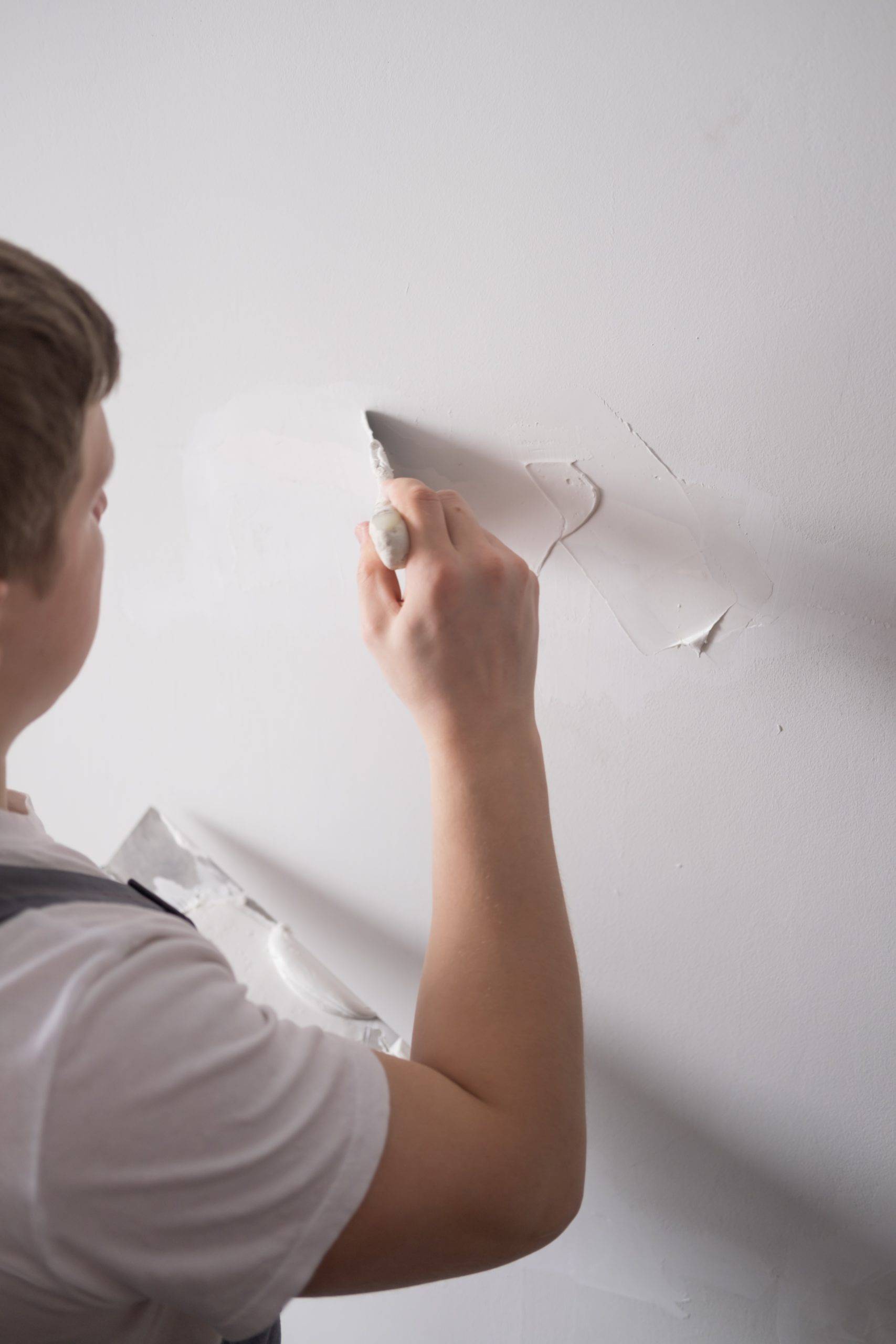
Before you try again, pay attention to where you missed the stud.
Whichever strategy you use, proceed with caution when drilling holes in your walls. Interior walls contain wiring, plumbing lines, and gas pipes that can cause personal injury or damage to your home if you happen to hit them with a drill bit. Before gearing up your drill, you should be reasonably confident of a stud’s location.
Frequently Asked Questions (FAQs)
How far apart are studs in a wall?
How do you tell if you’re drilling into a stud?
Where should you not drill into walls?
How long does a screw need to be to hit a stud?
How do you find a stud in a old house without a stud finder?
What happens if you hit a wire with a screw?
Can I use my phone as a stud finder?
How deep are studs behind drywall?
Drywall is attached flush to the studs, so the stud’s depth depends on the thickness of the drywall. The most common drywall for interior walls is 1/2-inch thick. You may also encounter thicker 5/8-inch drywall, which is sometimes used for ceilings or with rooms that require soundproofing.

